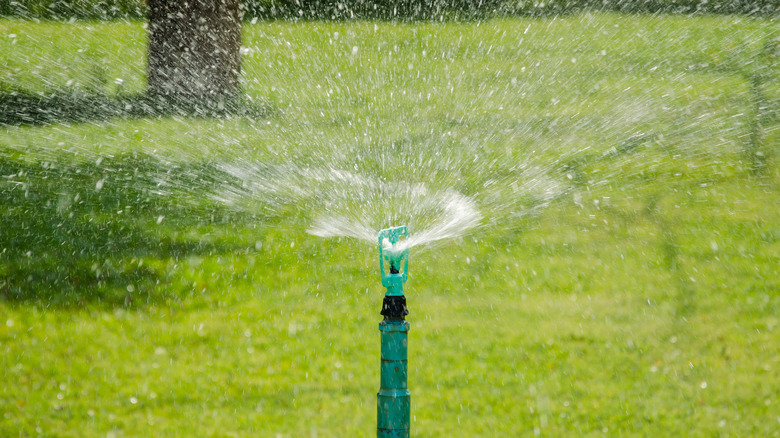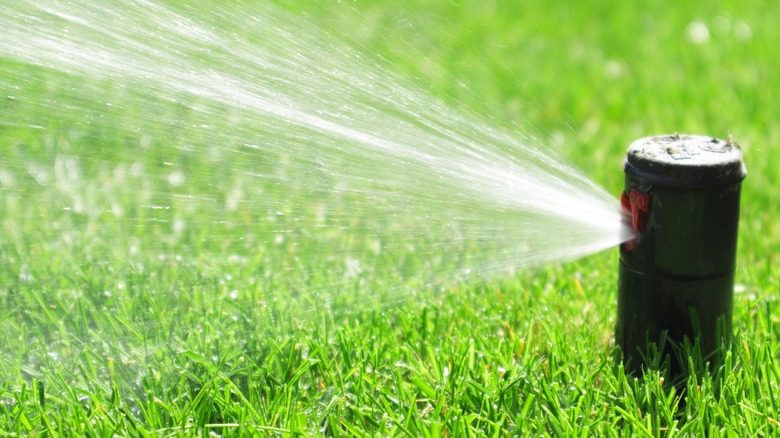We may receive a commission on purchases made from links.
Covering that bare spot in your lawn often means purchasing grass seed and waiting for it to come in. The problem is that you’re also creating an easy-to-access source of food for birds. While it’s nice to watch them flutter around, the grass seed cannot do its job and fill in your lawn with new grass if the birds have eaten it. Finding a solution isn’t always easy, especially if you’re a bird-friendly homeowner.
A common way to keep birds from eating your grass seed is to place straw on top of the lawn. This definitely can help prevent birds from accessing the seed, but it’s not ideal for a few reasons. The first is that the straw blocks light from reaching the seed, which is critical for growing seedlings. You’ll also need to remember to remove the straw by the time the tiny grass seeds sprout, allowing them access to ample light. This leads to another problem: cleanup. It’s no easy task to rake up the straw without damaging those new seedlings.
There are solutions, though, including one simple tip that supports grass growth: set up a few motion-activated sprinklers. As soon as the birds move in to capture the seed, the sprinklers will turn on and send them on their way. At the same time, the grass can get a good watering.
How motion-activated sprinklers can solve your grass seed problem

Many birds, especially smaller ones such as sparrows and finches, will feast on grass seed. Once the grass starts to come in, those tiny morsels of new growth are also an attractive treat for some larger birds, including Canadian geese. In most of these cases, sprinklers are a harmless solution.
You can use motion-controlled sprinklers for just about any type of wildlife that might damage your landscaping, including larger animals like dogs and deer. They can help to minimize the risk of mice moving into the area, too, which can also create havoc on your lawn. Some motion-controlled sprinklers are more advanced than others and may be programmed to only work during the day when many bird species are most active.
Even the simplest of motion-controlled sprinklers will work to deter birds. That’s because, once the water kicks in, the startled birds will fly away. Unless they don’t have any other food source in the area, they will most likely move on to an easier, less wet option. Keep in mind that birds do eat in the rain, but what makes this tactic different is the scare factor.
How to choose a motion-based sprinkler

For this method to work well, consider what you’re purchasing and the value it offers to your budget and particular lawn. It’s not logical to buy an expensive motion-activated sprinkler for a tiny spot that you’re filling in, but it may be a good choice if you have a constant wildlife problem (those pesky deer will always munch on flower blooms).
A wide range of motion-activated sprinklers are available, including options ranging in price from $42 up to $180 on Amazon (you can purchase them in most home improvement stores and some garden centers, too). A higher-end model, like the Yard Enforcer from Orbit, is programmable and highly targeted, delivering a sudden burst of water toward the animal as soon as its presence is detected.
Meanwhile, a product like Solar Sprinkler can work much the same way and doesn’t require electrical lines. Some products, like the Yardeen Garden Water Motion Sprinkler, provide the ability to adjust how far it operates, allowing you to cover as much space as you need. If there’s still not enough coverage, you may need to invest in more than one sprinkler. Once in place, you can also count on this as one way to keep your lawn green even after the seeds germinate.



